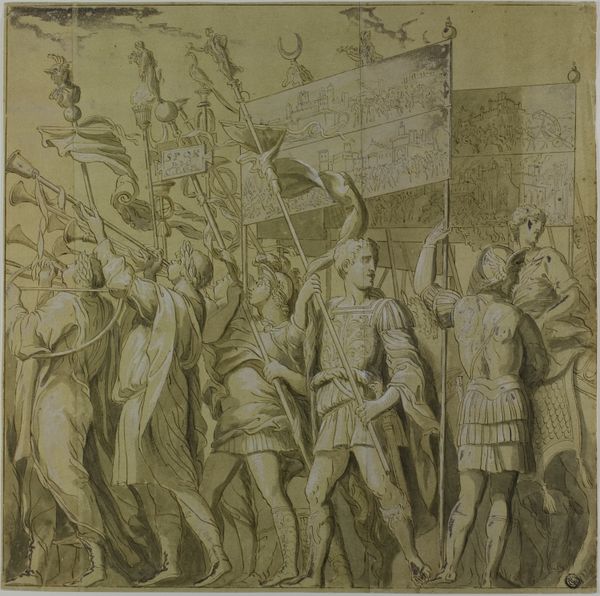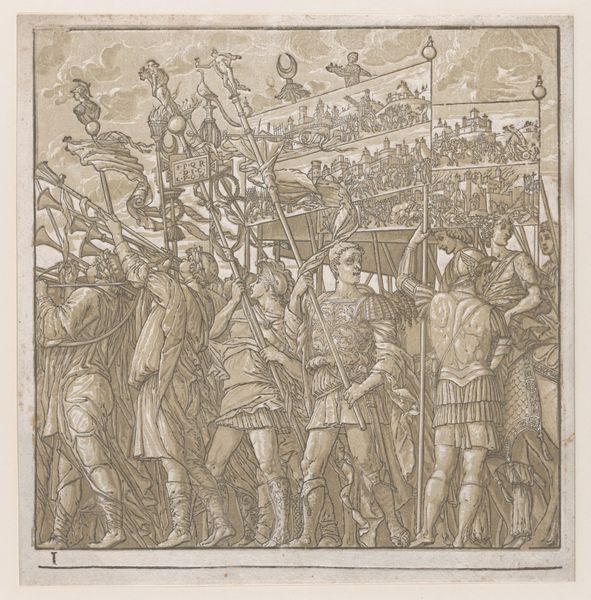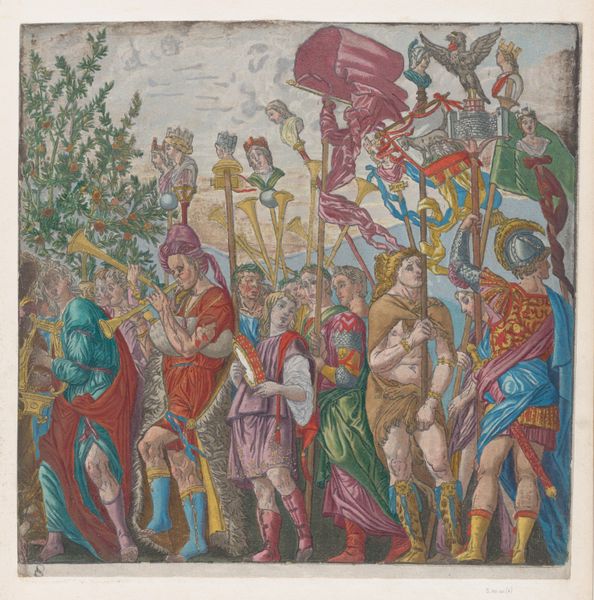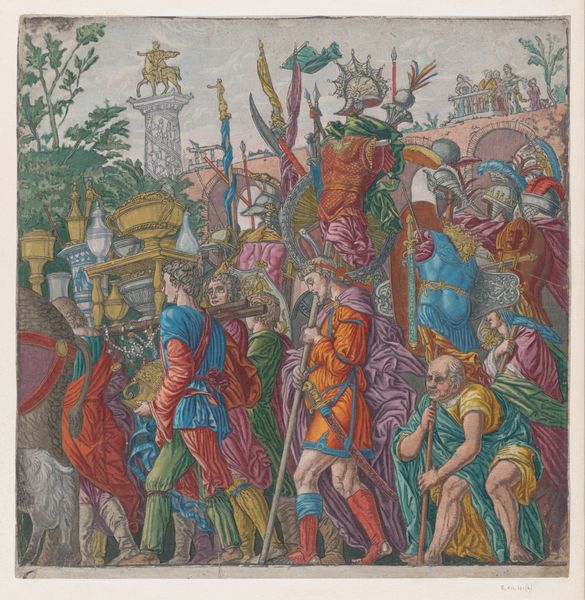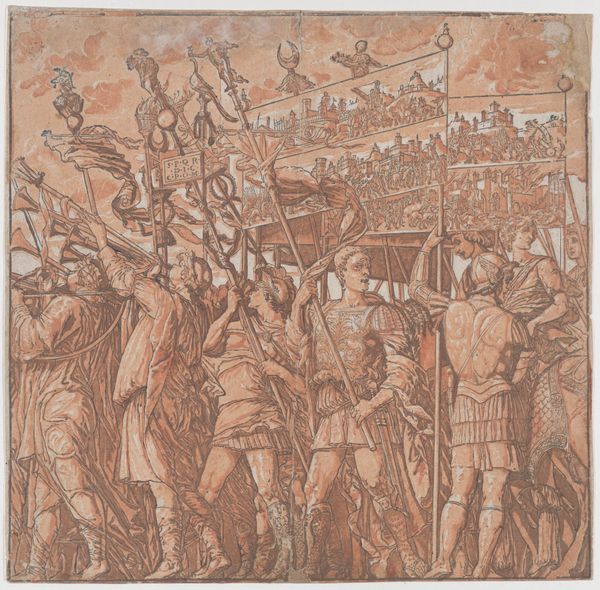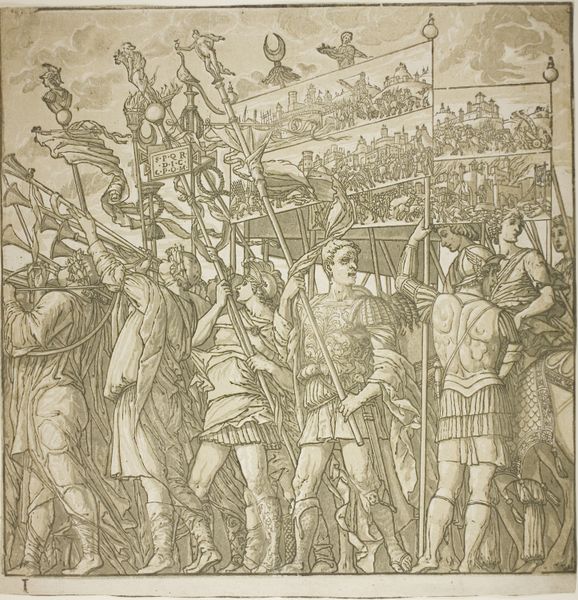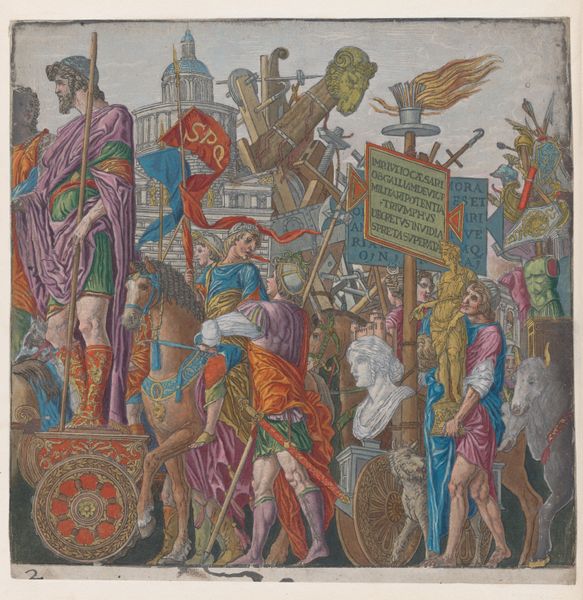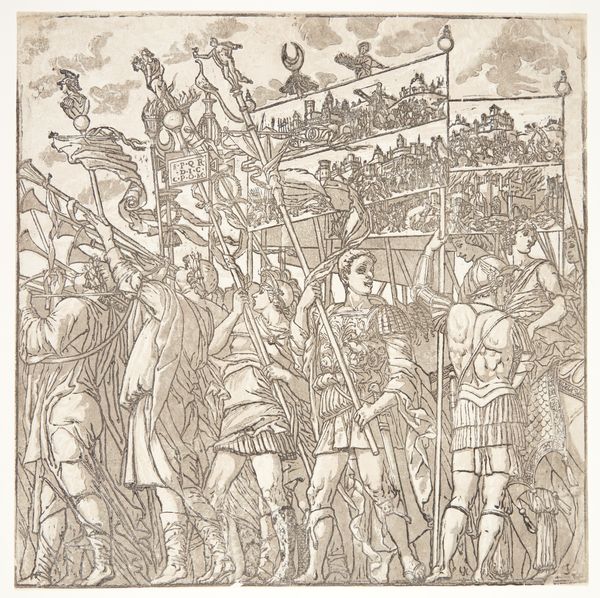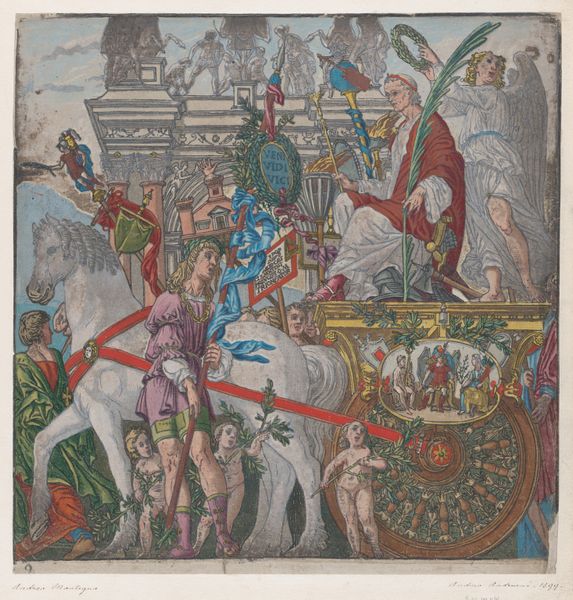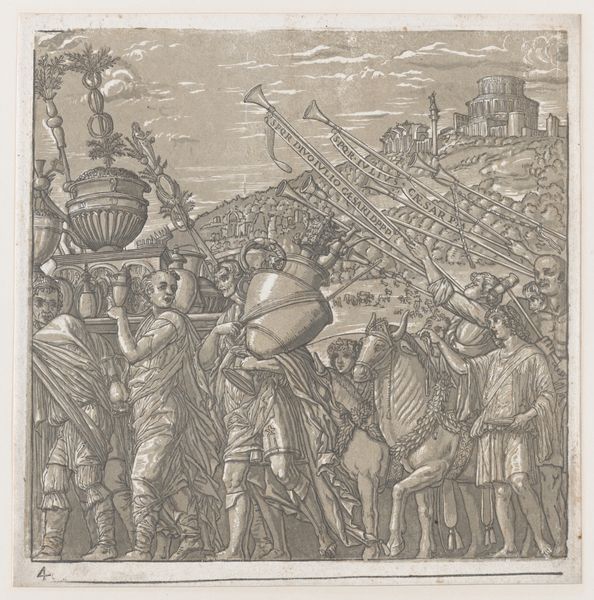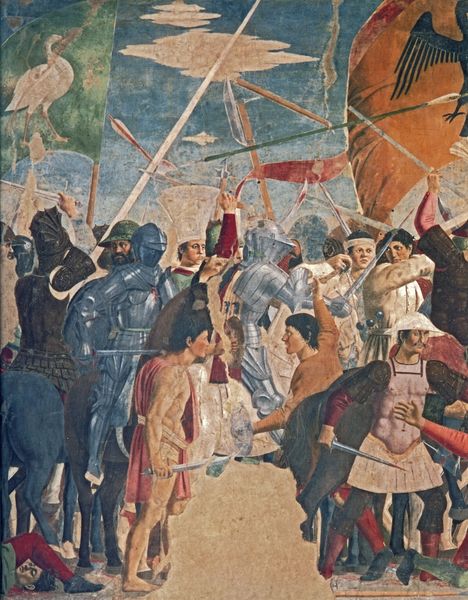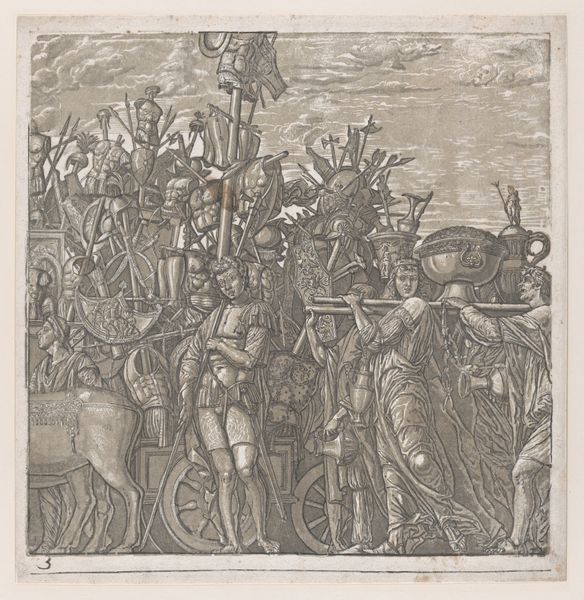
Sheet 1: Soldiers carrying banners depicting Julius Caesar's triumphant military exploits, from "The Triumph of Julius Caesar" 1599
0:00
0:00
drawing, print, watercolor
#
drawing
#
water colours
# print
#
figuration
#
11_renaissance
#
watercolor
#
coloured pencil
#
soldier
#
ancient-mediterranean
#
naive art
#
history-painting
Dimensions: Sheet: 14 15/16 × 14 11/16 in. (38 × 37.3 cm)
Copyright: Public Domain
Curator: Let's consider this print made by Andrea Andreani in 1599. It’s a section, titled “Sheet 1: Soldiers carrying banners depicting Julius Caesar's triumphant military exploits, from "The Triumph of Julius Caesar,” part of a larger series recreating Mantegna’s famous paintings. Editor: The colors are unexpectedly soft for such a bombastic subject. Watercolors, right? It gives it almost a pastel quality, subverting the expected fanfare of a military triumph. I mean, even the outlines feel softened, like looking at a faded fresco. Curator: That's astute. The medium – likely watercolor over a woodcut or engraving– would influence the reading. Notice the careful delineation of each figure, the idealized Roman profiles, and, of course, the banners themselves laden with symbolic imagery. Each bears not just scenes from Caesar's victories, but also figures and objects loaded with imperial symbolism. Editor: All that detail feels a bit…flat. Almost like a graphic novel, or even tapestry. It is all on one plane; that is striking, right? Also, someone clearly spent a lot of time and labor carefully applying all those different washes of color. Think of the time, especially with this many individual prints likely being produced from the block. Curator: Yes, but consider what those specific iconographic choices represent! Caesar, of course, is a symbol of ultimate power. Triumph becomes a trope used over and over by those with aspiration to power: his likeness, even centuries later, represents ambition, military might, and the legacy of Rome. Note, for example, how the banners present history not as linear but a continuous glorification of Rome itself. Editor: And each banner is like a little portable piece of propaganda that is so striking! Thinking about the means, someone carved each element, likely quite precisely, from a wood block and printed that so that they can disseminate this imperial story. These wouldn’t have just been on display here at the Met; each was bought and resold and used again, probably inspiring more images along the way. The labor of this print shaped culture itself. Curator: Precisely. This sheet isn't just an aesthetic object. It embodies the timeless allure of power, meticulously crafted and disseminated through symbolic visual language. I now see those flat planes suggesting the way history gets flattened. Editor: Exactly. This exploration really does showcase how materials and artistic process give shape and dimension to a whole historical moment! Thanks for pointing that out.
Comments
No comments
Be the first to comment and join the conversation on the ultimate creative platform.

